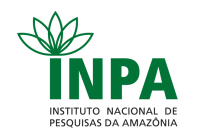Corpo Discente - Egressos
Elisa Maria de Oliveira
| Título | PROSPECÇÃO DE BACTÉRIAS DO SOLO DA AMAZÔNIA AMAPAENSE E OTIMIZAÇÃO DA PRODUÇÃO DE BIOSSURFACTANTE | ||||||||||||||||||||||||
| Data da Defesa | 26/06/2020 | ||||||||||||||||||||||||
| Download | Visualizar a Tese(5.55MB) | ||||||||||||||||||||||||
Banca
| |||||||||||||||||||||||||
| Palavras-Chaves | Terra firme; Várzea; Serratia sp.; Citrobacter sp.; Paenibacillus sp.; Surfactantes naturais; Nanoemulsão. | ||||||||||||||||||||||||
| Resumo | O objetivo do projeto foi prospectar potenciais bactérias produtoras de biossurfactante, bem como otimizar os fatores ambientais e nutricionais no processo de produção usando diferentes planejamentos experimentais. Além disso, nanoemulsões foram produzidas para verificar a eficiência dos biossurfactantes produzidos. Amostras de solo foram coletadas em ecossistemas de Terra Firme e Várzea, nos municípios de Porto Grande, Ferreira Gomes e Mazagão. A partir das amostras, técnicas de cultivo em superfície em meio Agar nutriente e PIA (Pseudomans Isolation Agar) foram utilizadas para o isolamento de bactérias. Screenings das potenciais bactérias não patogênicas produtoras de biossurfactante foi realizado com os isolados morfologicamente diferentes, por fermentação submersa em meio caldo nutriente e azeite de oliva como indutor. Os meios de cultivo foram otimizados variando-se fontes de carbono, nitrogênio, pH, temperatura e tempo de fermentação. Testes qualitativos (colapso da gota e dispersão do oleo) e quantitativos (índice de emulsificação e tensão superficial) foram realizados para selecionar as bactérias mais eficientes na produção de biossurfactante. Um total de 318 isolados de bactérias foram isoladas das amostras de solo e 43 extratos de bactérias foram selecionadas no primeiro screenig a partir da alta capacidade de emulsificação (E24> 50%). Os isolados foram sequenciados e três gêneros foram identificados: Serratia, Paenibacillus e Citrobacter. No segundo screening, 15 foram selecionados em função da sua capacidade em reduzir a tensão superficial do meio de cultivo a partir dos extratos livres de células. Os gêneros Serratia sp. e Paenibacillus sp. apresentaram os melhores resultados e por isso estratégias para aumentar a produção de biossurfactante foram realizadas. Para avaliar os efeitos dos parâmetros nutricionais e ambientais o método de uma variável de cada vez foi empregado. Já para determinar as condições ideais de produção de biossurfactante e tensão superficial o Delineamento Central Composto Rotacional (DCCR) foi utilizado. Para a bactéria Paenibacillus sp. o querosene foi a fonte de carbono que apresentou menor redução da tensão superficial. O delineamento em fatorial completo apresentou os fatores tempo e temperatura como significativos no processo de produção de biossurtfactante. O modelo matemático foi considerado adequado para descrever a produção de biossurfactante apresentando R2 = 0,7268, com tensão superficial do meio de 34,6 mN/m nas condições de 30 ºC e 24h. Nos sistemas óleo de milho/ureia e glicerol/ureia foi verificada a produção de biossurfactante através da redução da tensão superficial do meio de 69,7 mN/m para 35,70 mN/m (redução de 48,78%) e 68,9 mN/m para 37,10 mN/m (redução 46,15%), respectivamente. A capacidade emulsionante dos biossurfactantes presentes nos meios foi testada pela síntese de nanoemulsões (NE) por baixo aporte de energia. Além disso, a estabilidade das NE foi avaliada após estocagem a temperatura ambiente por 14 dias. Análises do tamanho médio da partícula, índice de polidispersão e potencial zeta das nanoemulsões foram determinados através do espalhamento dinâmico da luz. As formulações contendo 0,1% de óleo de soja e extratos brutos sem células, geradas com suplementação com óleo de milho/uréia e glicerol/uréia, atingiram tamanhos médios de partículas de 453,1 nm e 667,3 nm, respectivamente. Os resultados demonstraram que as otimizações por modelos matemáticos foram adequadas para identificar as melhores condições de produção de biossurfactante produzido por bactérias do gênero Serratia sp. e Paenibacillus sp. Além disso, os biosurfactantes mostraram-se efetivos para a produção de nanoemulsões. | ||||||||||||||||||||||||
| Abstract | The objective of the project was to prospect potential biosurfactant-producing bacteria, as well as to optimize environmental and nutritional factors in the production process using different experimental designs. In addition, nanoemulsions were produced to verify the efficiency of the produced biosurfactants. Soil samples were collected in Upland and Floodplain ecosystems, in the municipalities of Porto Grande, Ferreira Gomes, and Mazagão. From the samples, surface cultivation techniques in nutrient Agar and PIA (Pseudomonas Isolation Agar) were used to isolate bacteria. Screenings of potential non-pathogenic bacteria producing biosurfactant were carried out with the morphologically different isolates, by submerged fermentation in nutrient broth and olive oil as an inducer. The culture media were optimized by varying sources of carbon, nitrogen, pH, temperature, and fermentation time. Qualitative (drop collapse and oil dispersion) and quantitative (emulsification index and surface tension) tests were performed to select the most efficient bacteria in the production of biosurfactants. A total of 318 bacterial isolates were isolated from soil samples and 43 bacterial extracts were selected on the first screening from the high emulsification capacity (E24> 50%). The isolates were sequenced and three genera were identified: Serratia, Paenibacillus, and Citrobacter. In the second screening, 15 were selected due to their ability to reduce the surface tension of the culture medium from cell-free extracts. The genera Serratia sp. and Paenibacillus sp. presented the best results and therefore strategies to increase the production of biosurfactants were carried out. To assess the effects of nutritional and environmental parameters, the method of one variable at a time was used. To determine the ideal conditions for the production of biosurfactant and surface tension, the Central Rotational Composite Design (DCCR) was used. For the bacterium, Paenibacillus sp. kerosene was the carbon source that showed the least reduction in surface tension. The complete factorial design presented the time and temperature factors as significant in the production process of biosturtant. The mathematical model was considered adequate to describe the production of biosurfactant with R2 = 0.7268, with a medium surface tension of 34.6 mN/m at 30 ºC and 24 h. In the corn oil/urea and glycerol/urea systems, the production of biosurfactant was verified by reducing the surface tension of the medium from 69.7 mN/m to 35.70 mN/m (reduction of 48.78%) and 68,9 mN/m to 37.10 mN / m (46.15% reduction), respectively. The emulsifying capacity of the biosurfactants present in the media was tested by the synthesis of nanoemulsions (NE) with low energy input. In addition, the stability of the NE was evaluated after storage at room temperature for 14 days. Analyze of the average particle size, polydispersity index and zeta potential of the nanoemulsions were determined by dynamic light scattering. Formulations containing 0.1% soy oil and crude extracts without cells, generated with supplementation with corn oil/urea and glycerol/urea, reached average particle sizes of 453.1 nm and 667.3 nm, respectively. The results showed that the optimizations by mathematical models were adequate to identify the best conditions for the production of biosurfactants produced by bacteria of the genus Serratia sp. and Paenibacillus sp. In addition, biosurfactants have been shown to be effective for the production of nanoemulsions. | ||||||||||||||||||||||||
Parceiros

























